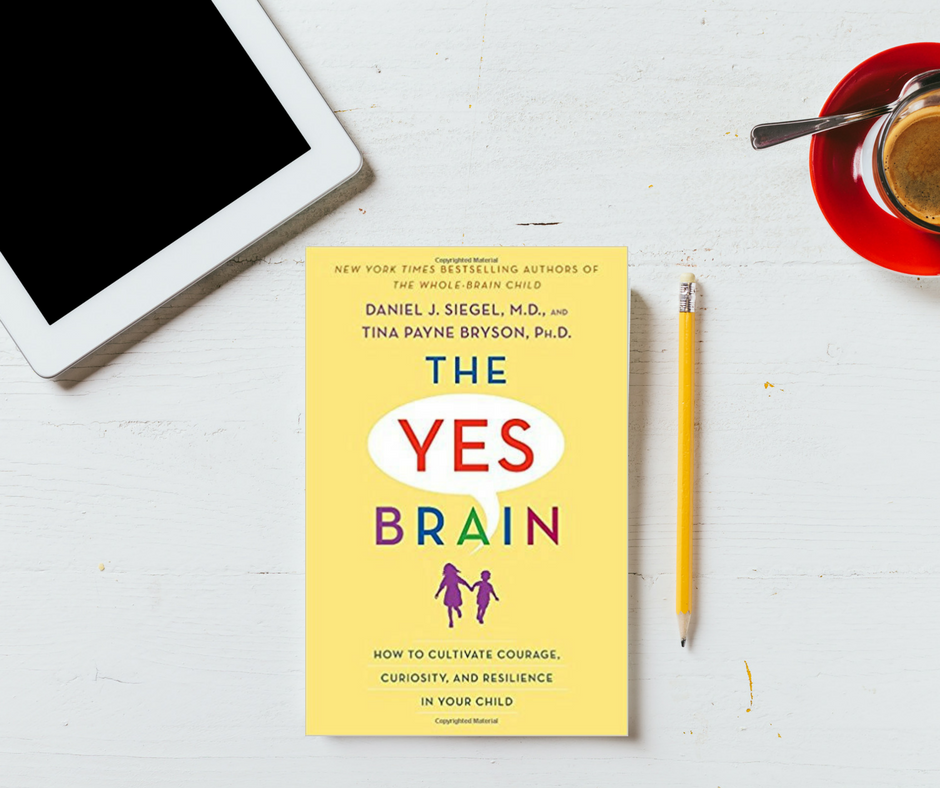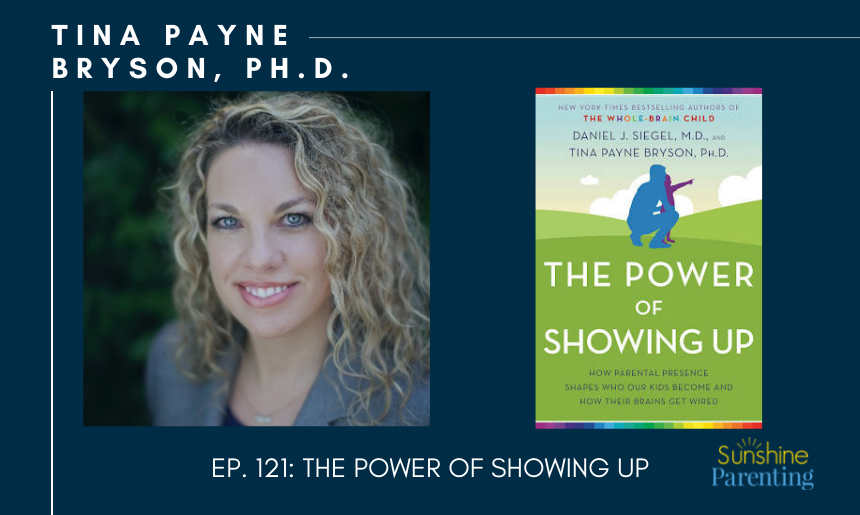
Show notes & links available here.
Subscribe for resources and ideas for happier, more connected families.
This is an encore presentation of one of my favorite episodes. Enjoy!
Helpful short video messages from Tina
https://vimeo.com/399730541
https://vimeo.com/402467778
https://vimeo.com/402633303
https://vimeo.com/402646808
DOWNLOAD Tina’s REFRIGERATOR SHEETS, which are summaries of each of Tina’s books
ADDITIONAL CORONAVIRUS RESOURCES: Tina’s website has a whole page of resources for educators, talking with kids, mindfulness resources, fun downtime activities, etc at
Center for Connection clinician put together a Health Mind Platter article for maintaining balance while social distancing.
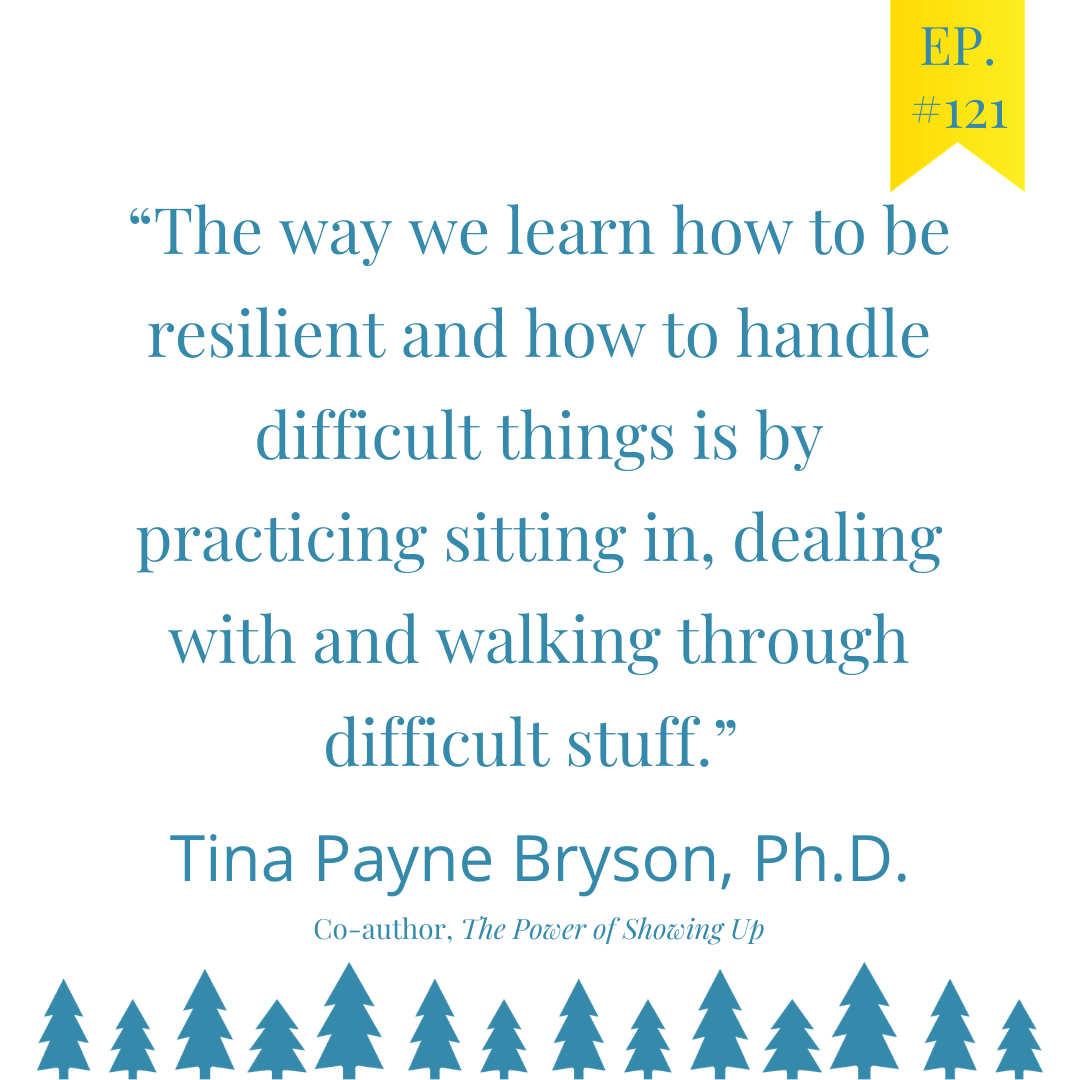
ORIGINAL SHOW NOTES
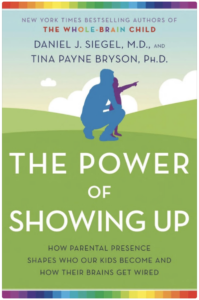 Dr. Tina Payne Bryson is one of my favorite people. She’s a psychotherapist, founder and executive director of the Center for Connection in Pasadena, California, and co-author with Dr. Daniel Siegel of four of my favorite books, including her most recent one (out January 7, 2020): The Power of Showing Up: How Parental Presence Shapes Who Our Kids Become And How Their Brains Get Wired.
Dr. Tina Payne Bryson is one of my favorite people. She’s a psychotherapist, founder and executive director of the Center for Connection in Pasadena, California, and co-author with Dr. Daniel Siegel of four of my favorite books, including her most recent one (out January 7, 2020): The Power of Showing Up: How Parental Presence Shapes Who Our Kids Become And How Their Brains Get Wired.
Over the past several years, I’ve had the privilege of getting to know Tina not just as an amazing speaker and author but as a phenomenal person and friend. She even wrote the foreword for my book, Happy Campers!
In The Power of Showing Up, Tina and Dan share important research and findings about childhood attachment and how being present for our kids is so vital for their healthy development. This book is helpful not only for parents but also for adults who want to better understand how their own childhoods impact their adult relationships and how to change generational patterns of insecure attachment.
Big Ideas
- One of the best predictors for how well kids turn out is that they have a secure attachment with at least one person.
- As discussed in the conclusion of the Whole Brain Child, the most important thing a parent can do is to show up and really be present for their children, helping them build secure attachments.
- Showing up means offering a quality of presence. And it’s simple to provide once you understand the four building blocks of a child’s healthy development.
- Every child needs to feel what Siegel and Bryson call the Four S’s:
- Safe: We can’t always insulate a child from injury or avoid doing something that leads to hurt feelings. But when we give a child a sense of safe harbor, she will be able to take the needed risks for growth and change.
- Seen: Truly seeing a child means we pay attention to his emotions—both positive and negative—and strive to attune to what’s happening in his mind beneath his behavior.
- Soothed: Soothing isn’t about providing a life of ease; it’s about teaching your child how to cope when life gets hard, and showing him that you’ll be there with him along the way. A soothed child knows that he’ll never have to suffer alone.
- Secure: When a child knows she can count on you, time and again, to show up—when you reliably provide safety, focus on seeing her, and soothe her in times of need, she will trust in a feeling of secure attachment. And thrive!
- There are 4 different types of childhood attachment based on parenting patterns:
- Abusive, frightening parenting leads to disorganized attachment.
- Avoidant attachment results when parents avoid dealing with the emotional needs of a child. Intimacy is lacking and parents are not tuned into the internal world. This type of parenting results in children who shut down emotionally and they grow up to also have this dismissive pattern.
- The anxious parent is really unpredictable or even intrusive. The parent’s emotions take over and flood into what’s happening. This results in clingy, unpredictable behavior and ambivalent attachment.
- The “Good Enough” parent is one who shows up when needed. This secure, optimal attachment pattern can be full of ruptures and mistakes as long as reparations are made with kids. They get the message: “You’re safe. I’m with you. We’ll figure it out together.”
- When kids feel safe, seen and soothed most of the time, their brains are wired to securely know that if they’re having a hard time or in distress, someone will see it and show up for them.
- Repeated kinds of secure attachment experiences build the middle prefrontal cortex. This is the seat of insight, empathy, emotional regulation, bodily regulation, attuned communication, intuition, morality, executive function, the part of the brain that allows us to be mentally healthy and to have a wide window of tolerance to withstand adversity.
- We live in a time when there is so much distraction, disconnection, and despair. The antidote is being present with each other and really focusing on connection.
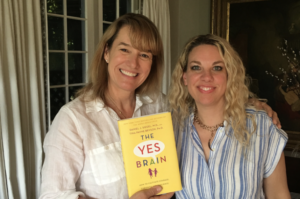
Audrey & Tina
Quotes
Tina: “There is one thing that can really be our North star in our relationships as caregivers with our children. And it actually applies to all of our relationships. One of the best predictors for how well kids turn out is that they have a secure attachment with at least one person.”
Tina: “This to me is the most important of all of the things I know and all the things I’ve ever studied or written about or talked about. This is the one most important thing.”
Audrey: “About 10 years ago when the Whole Brain Child came out, it wasn’t as hard to show up as parents. Now, we are so fragmented and it’s more normal to be distracted and not present. It’s so interesting to me how the concept of mindfulness has exploded. Basically, it’s just being where you are and with the person you’re with. It’s not some crazy concept, it’s just something that now we need to intentionally practice because it’s no longer common.”
Tina: “This whole achievement-based way that we define success, and the focus on what kind of college your kid gets into, has really driven our parenting to this kind of hyper-parenting space where it’s even harder to be present and see our kids and know our kids. That hyper-parenting is seen as the norm. And that’s not what the science says that we should be doing, it’s kind of the opposite.”
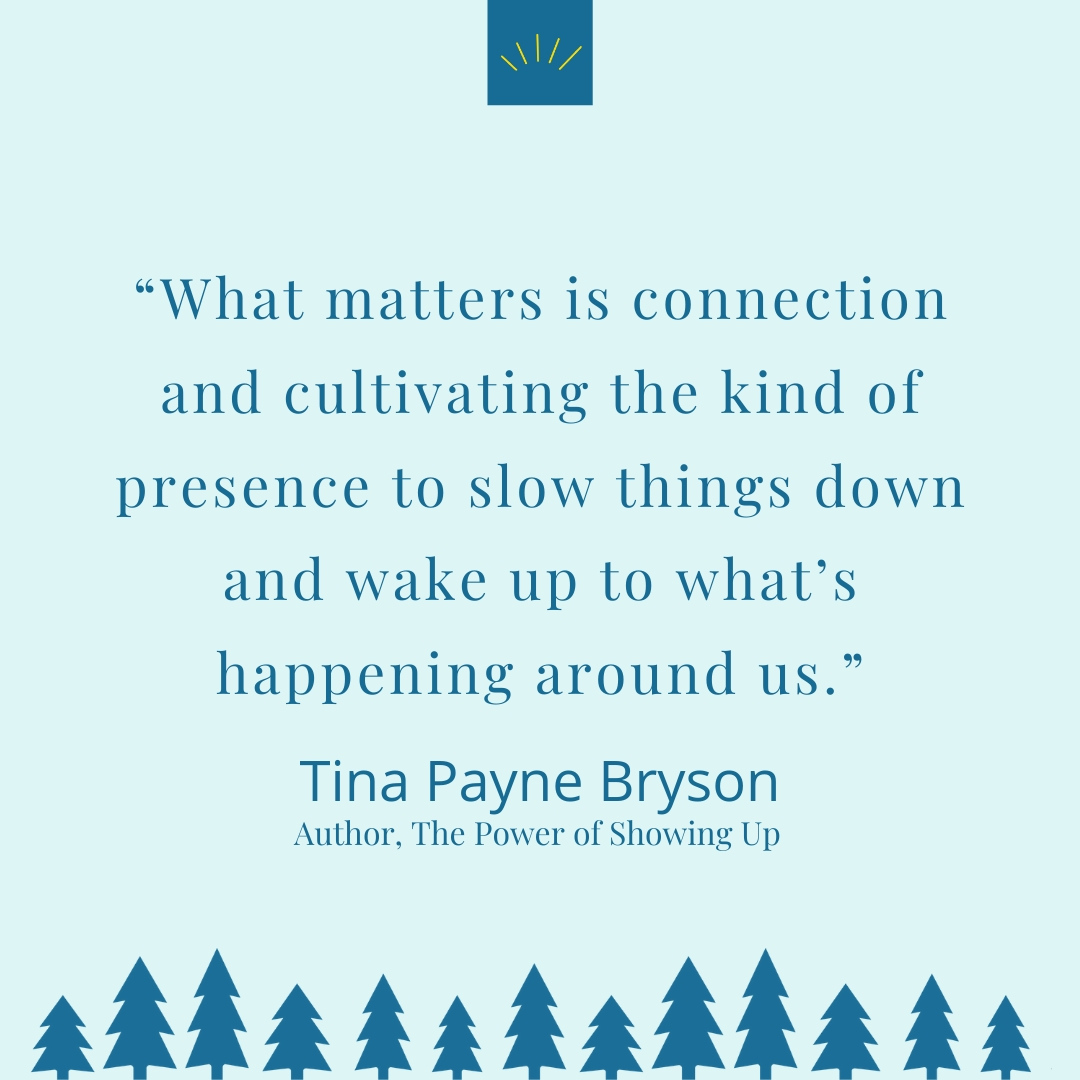
Tina: “It’s the experience we have, in particular, the repeated experiences, and even more particularly repeated relational experiences that have a huge impact on how our brain wires. So if our homes are frenetic and chaotic, and we’re constantly over-scheduled and distracted and disconnected, constantly trying to just make it to the next thing, those are the kinds of experiences that are wiring the brain for that kind of pace, hyper-alert and never calm. It breeds anxiety. Instead think about how we can create environments or relationships that are actually safe havens, a safe harbor for the ship out in the storm.”
Tina: “Attachment really is a mammal thing. It goes beyond humans and at it’s basic, its that when we are in danger or distress, we go to an attachment figure that will help us be safe and survive. We are biologically programmed to choose someone to help us. So when parents provide that secure attachment, which looks like the 4 S’s of safe, seen, soothed, then over time that leads to secure.”
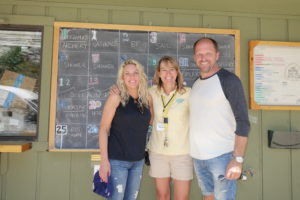
Tina & Audrey (with Michael Thompson of Lantern Camps)
Tina: “You can imagine how powerful it is to give the gift of security to kids because then they find relationships, like friends and partners, that they expect to see them and show up for them. Ultimately what happens is that their brain is wired to provide the 4 S’s for themselves, so they can help themselves feel safe, seen and soothed.”
Audrey: “Sometimes when parents think of the word safe, it can lead to over-parenting and not allowing our kids to climb up the jungle gym or do these things that are a little bit risky. Keeping your kids safe does not mean putting the bubble wrap on and not letting them ever go anywhere or do anything.”
Tina: “If we overprotect them, that is actually not making them safe. That makes them fragile. The way we learn how to be resilient and how to handle difficult things is by practicing sitting in, dealing with and walking through difficult stuff.”
Tina: “It means walking with them through it and allowing them to do it. It’s also not permissive. It’s also having boundaries where your kids know that you mean business and you’re going to hold the boundary. That actually makes them feel safe.”
Tina: “Just showing up in that moment with my presence is all my child really needs. That’s the key.”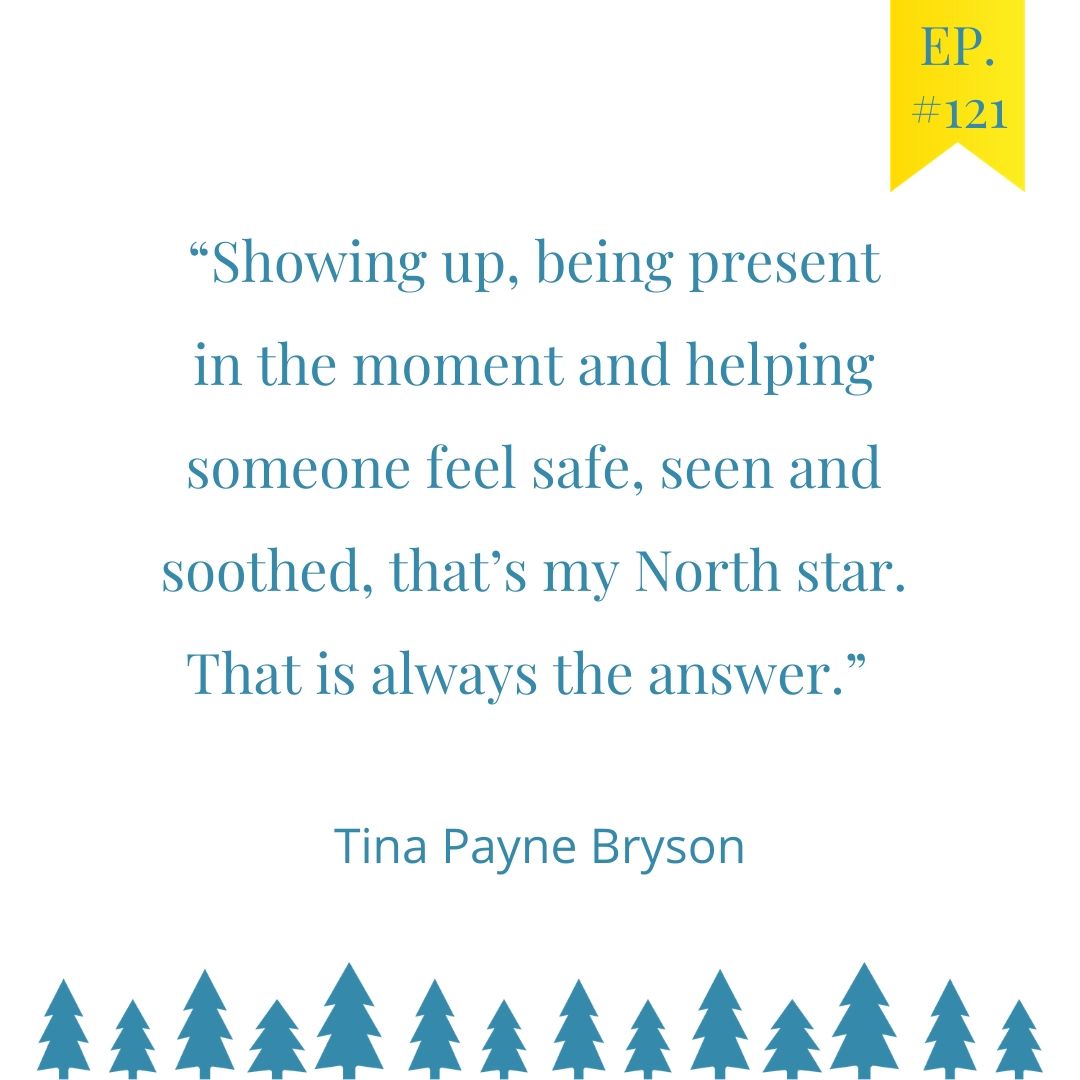
Tina: “There are so many competing things for what we should be doing as parents. We beat ourselves up for not doing enough and there are moments when I don’t know what to do or if my instinct is right.”
Audrey: “It’s not about being permissive. When your child’s upset about something, it’s not about giving in to them. In fact, that’s not right. You need to hold the boundary, but you can do it nicely. I think parents sometimes think they have to be harsh to hold a boundary because maybe that’s what was modeled for them.”
Tina: “The most important thing at any given moment is to really be present. We need to do our own work and have our own self-care so that we have the capacity to do it.”
Tina: “If we didn’t have that modeled for us or we didn’t have our brains wired in that way because we had parents who were scary or who were emotionally dismissing or who made things worse instead of soothing us, we need to make sure we have people in our lives that show up for us and give us the 4 S’s so that our tank gets full so that we can do that.”
Tina: “I think it’s such a good way to live. It’s not just with our kids, but you know, when you’re in the store checking out, making sure you’re not on your phone and you’re making eye contact with the person and just asking how are you today? Or you know, has it been really busy? Be present in whatever moments you have because it’s better for the world.”
Audrey: “We don’t have to be perfect, we can just do the basic human showing up stuff.”
Tina: “That’s also a good thing to remember: Not perfect, but present. That’s just a good little mantra.”
Related
Helping Kids Find Their “Green Zone” (and Finding our Own!)
Ep. 20: The Yes Brain with Tina Payne Bryson, PhD
Ep. 95: Raising a “Yes Brain” Child with Tina Payne Bryson
The Yes Brain with Tina Payne Bryson
11 Ways to Help Kids Create REAL Connections

Tina Payne Bryson, Ph.D.
Learn more about Tina by visiting her websites:
The Center for Connection
Tina Payne Bryson, Ph.D.
Other Books by Tina Payne Bryson and Dr. Dan Siegel:
The Whole Brain Child: 12 Revolutionary Strategies to Nurture Your Child’s Developing Mind

